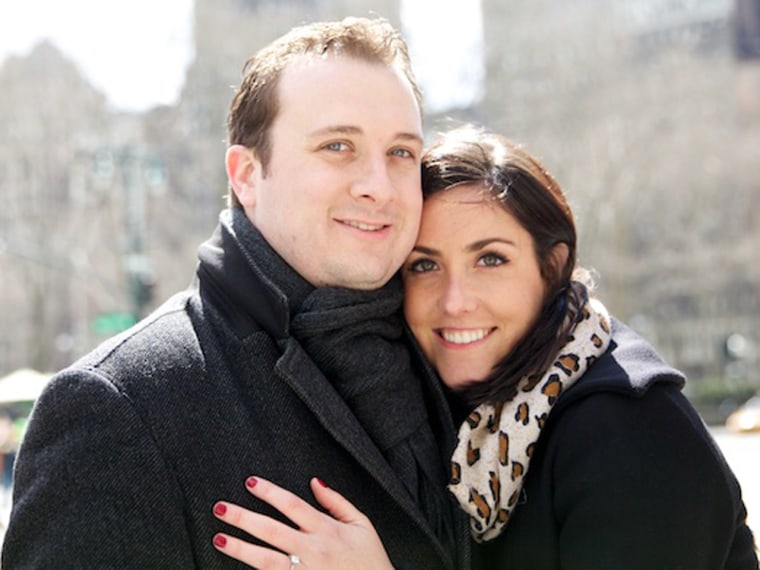
More women are choosing to live with men first without marriage and more of those relationships are lasting longer, according to a new government study that tracks the continuing climb of cohabitation in the U.S.
Nearly half of women in what researchers call "first unions" with men -- 48 percent -- moved in with no wedding vows according to interviews conducted between 2006 and 2010, up from 43 percent in 2002 and 34 percent in 1995.
About 40 percent of those relationships became marriages after three years, but about 32 percent continued as cohabitations, suggesting an important new role for the arrangement once known as “shacking up,” says one researcher.
“It’s becoming more acceptable to be in a long-term, committed relationship without a legal document,” says Pamela J. Smock, director and research professor at the Population Studies Center at the University of Michigan-Ann Arbor.
By the time they’re 20, 1 in 4 women ages 15 to 44 in the U.S. have lived with a man, and by the time they’re 30, that ratio climbs to 3 in 4, the new study shows.
“The question becomes not who cohabits, but who doesn’t?” Smock says.
The survey relies primarily on information from a sample of 12,279 women interviewed between 2006 and 2010 as part of the federal National Survey of Family Growth, with data from previous reports in 1995 and 2002.
But it doesn’t take figures from the National Center for Health Statistics to prove that living together is rapidly becoming a standard relationship milestone, says Melissa Melms, 25, of Hoboken, N.J., who moved in with boyfriend Jonathan Mills, 29, 18 months ago.
“It was definitely a no-brainer for me. It was always something I planned to do,” said Melms, a blogger wrote about the move -- and the couple’s subsequent engagement -- in her Smitten column for Glamour.com.
Cohabiting was a way to make sure they were ready the daily rewards and challenges of marriage, says Melms, who adds that most of the young women she knows feel the same.
“I think it would be weird to me to have a friend who would wait to move in together until after they got married,” she said.
Melms, who is planning a July 2014 wedding in Aruba, is part of a rising trend toward cohabitation among women of most races and education levels.
Between 1995 and 2006 to 2010, first-time cohabitation jumped by 43 percent for white women, 57 percent for Hispanic women and 39 percent for black women, the study showed. Only Asian women stayed the same, with about 22 percent cohabiting during both time periods.
About 70 percent of women with less than a high-school education moved in with a man as a first union in 2006 to 2010, up from 46 percent in 1995. For women with a bachelor’s degree or higher, 47 percent now live together first, up from about 34 percent in 1995, the study shows.
For all women in the study, cohabitation relationships lasted longer: They averaged 22 months in 2006 to 2010, up from 13 months in 1995.
Those longer relationships include the nearly 20 percent of women who became pregnant in their first year of living with a man outside of marriage. Nearly a quarter of recent births among women ages 15 to 44 occurred while they were cohabiting, up from about 14 percent in 2002.
Such figures are likely unsettling to traditionalists in society. “People will see this as a continued displacement of the importance of marriage,” Smock says.
Indeed, the percentage of women whose first union was a marriage fell to 23 percent in the recent figures, down from 39 percent in 1995, the study shows.
But Smock says that the fact that more cohabiting relationships are continuing, even when they don’t lead to marriage, is a significant finding.
“One take on these data would be that cohabiting families are choosing to stay together, they are becoming more committed and they are seeing their families, many with children, as a legitimate family form and are feeling less pressure to marry,” Smock says. “It’s the new normal.”
The study authors, led by Casey E. Copen of the Center for Disease Control and Prevention's vital statistics division, put it this way:
"Cohabitation is a common part of family formation in the United States and serves as both a step toward marriage and as an alternative to marriage."
For Melms, as for many educated young women, living together was a logical progression on a path of increasing commitment.
“If anything, it’s just cemented things a little bit more,” she said. “We’re talking about getting a puppy now. That’s the next step.”
Related stories: